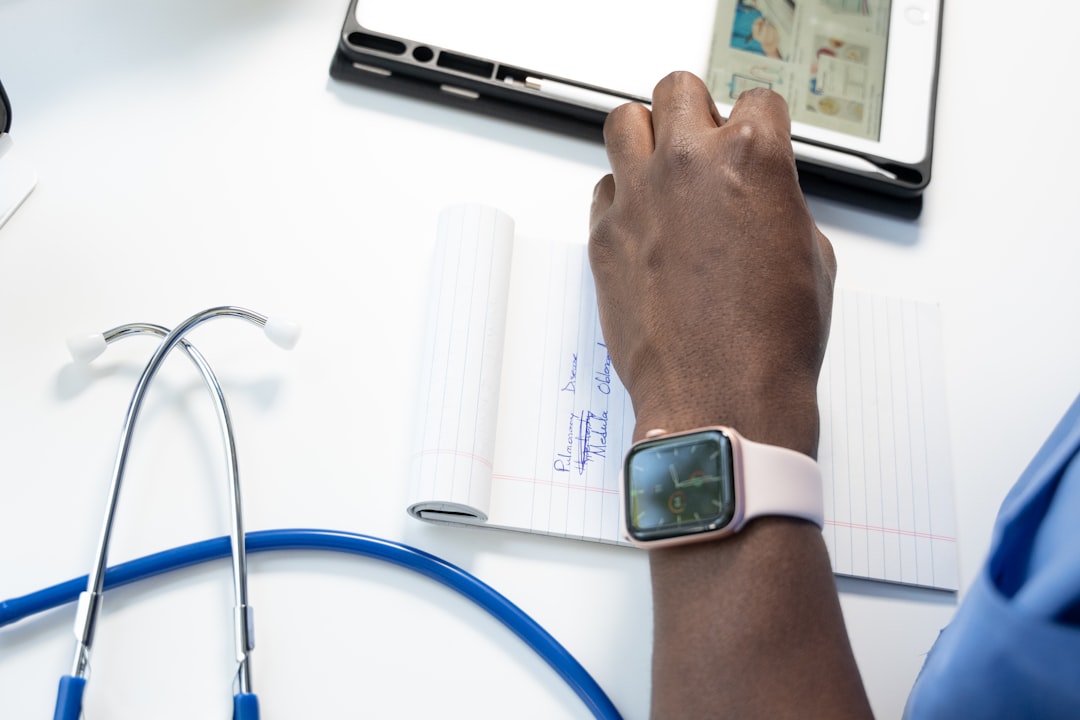Importance of Trial Advocacy Skills in Legal Practice
Trial advocacy skills are a cornerstone of effective legal practice, serving as the bridge between legal theory and courtroom success. These skills encompass a wide range of abilities, including persuasive argumentation, strategic questioning, and the artful presentation of evidence. Their importance cannot be overstated in an era where legal outcomes can pivot on the ability to compellingly present a case.
At the heart of trial advocacy is the capacity to communicate effectively. Lawyers must distill complex legal concepts into clear, understandable arguments that resonate with judges and juries alike. This involves not only mastery of the facts and law but also an understanding of human psychology and storytelling. A lawyer skilled in trial advocacy knows how to weave facts into a narrative that captures attention and sways opinion.
Cross-examination is another critical component of trial advocacy skills. It requires keen analytical thinking and quick reflexes to respond to the unpredictable nature of witness testimony. Effective cross-examination can dismantle an opponent's case by exposing inconsistencies or biases, while simultaneously bolstering one's own position.
Moreover, trial advocacy skills play a crucial role in pre-trial preparations. Lawyers must meticulously craft opening statements and closing arguments that succinctly summarize their cases while anticipating potential objections from opposing counsel. This level of preparation demands not only thorough research but also creative thinking to foresee how best to counteract opposing strategies.
In addition to these technical aspects, successful trial advocates possess an innate confidence and presence in the courtroom. They command respect through their demeanor, demonstrating poise under pressure-a quality that can influence how their arguments are perceived by all courtroom participants.
Ultimately, trial advocacy skills elevate a lawyer's effectiveness in representing clients' interests within the adversarial system. By honing these skills, lawyers ensure they are prepared for any eventuality at trial, enhancing their ability to secure favorable outcomes for those they represent. As such, investing time and effort into developing strong trial advocacy capabilities is indispensable for any legal practitioner aiming for excellence in their field.
Understanding the Courtroom Dynamics and Procedures
Understanding courtroom dynamics and procedures is a crucial aspect of mastering trial advocacy skills. This knowledge not only enhances a lawyer's ability to present their case effectively but also significantly influences the outcome of a trial. At the heart of effective trial advocacy lies the advocate's ability to navigate the intricate dance between legal rules, human behavior, and persuasive communication.
Courtroom dynamics refer to the interpersonal interactions that occur within the court setting among judges, attorneys, jurors, witnesses, and other courtroom participants. An adept trial lawyer must be keenly aware of these dynamics as they can impact both the presentation and reception of evidence and arguments. For instance, understanding how a particular judge prefers proceedings to be conducted can help an attorney tailor their approach in a manner that aligns with those preferences, thereby improving their credibility in the eyes of the court.
In addition to observing interpersonal cues, lawyers must thoroughly understand procedural rules and how they govern courtroom processes. These procedures dictate everything from how evidence is introduced to how objections are raised and addressed. A comprehensive grasp of these protocols ensures that advocates can focus on crafting compelling narratives without becoming entangled in procedural missteps that could undermine their case.
Moreover, effective communication is paramount in leveraging courtroom dynamics to an advocate's advantage. This involves more than just eloquence; it requires an acute awareness of non-verbal cues such as body language and facial expressions which often convey more than words alone. Recognizing when a juror appears confused or disinterested allows an attorney to adjust their delivery or clarify key points.
Trial advocacy also demands strategic thinking-anticipating opposing counsel's moves and preparing counterarguments while maintaining composure under pressure. The ability to think on one's feet is essential as trials often deviate from expected scripts due to unforeseen developments such as unexpected witness testimonies or new evidence being introduced.
Furthermore, understanding jury psychology forms another critical component of successful trial advocacy. Connecting with jurors on a human level by weaving compelling stories rather than merely presenting dry facts can significantly influence their perceptions and decisions.
Ultimately, mastering courtroom dynamics and procedures is about achieving balance: balancing adherence to legal formalities with engaging storytelling; balancing assertiveness with respect for all courtroom participants; balancing strategy with adaptability. By honing these skills through practice, observation, and continuous learning, advocates enhance not only their own effectiveness but also contribute positively towards upholding justice within our legal system.
In conclusion, understanding courtroom dynamics and procedures is indispensable for any aspiring trial lawyer seeking mastery in trial advocacy skills. It requires both technical proficiency in legal processes alongside emotional intelligence to navigate complex human interactions effectively-skills that together enable advocates not just to participate but excel within this challenging yet rewarding arena.
Mastering the Art of Persuasive Communication
Mastering the Art of Persuasive Communication in trial advocacy is akin to fine-tuning the strings of a musical instrument, ensuring each note resonates with clarity and purpose. As an advocate stepping into the courtroom, one's ability to influence and persuade becomes paramount, not just as a skill but as an art form that can sway the course of justice.
At its core, persuasive communication in trial advocacy is about storytelling. It involves crafting a narrative that not only presents facts but also appeals to emotions and logic. This narrative must be coherent and compelling, designed to captivate the jury's attention from opening statements to closing arguments. The effective advocate knows how to weave facts with human interest, creating a tapestry that jurors can relate to and remember.
A crucial element of persuasive communication is understanding your audience-the jury. Each member comes with their own biases, experiences, and perceptions. An adept advocate will tailor their message, considering these nuances to ensure it resonates deeply. This might involve simplifying complex legal jargon into relatable concepts or highlighting aspects of a case that align with common human values like fairness or justice.
The non-verbal aspect of communication cannot be ignored either. Body language, tone of voice, and even pauses play a significant role in persuasion. A confident stance coupled with deliberate eye contact can bolster credibility and convey conviction. Similarly, varying one's tone can emphasize key points, while strategic pauses allow the jury time to digest critical information.
Moreover, listening is an often-overlooked component of persuasive communication but stands as fundamental in trial advocacy. By actively listening during witness testimonies or opposing counsel's arguments, an advocate can identify weaknesses or inconsistencies that might otherwise be overlooked. These moments provide opportunities for rebuttal or cross-examination that underscore the advocate's position more persuasively.
Preparation is equally vital; knowing every detail of your case inside out builds confidence during presentations and questioning periods. But beyond mere familiarity with facts lies the need for adaptability-to think on one's feet when unexpected developments arise without losing composure or focus.
Ultimately, mastering persuasive communication in trial advocacy requires practice-a continuous honing of skills through experience and reflection upon successes as well as setbacks. It demands an understanding not only of law but also psychology-knowing what moves people emotionally while appealing logically.
In summary, being an effective trial advocate means embracing both artful storytelling and strategic communication techniques tailored uniquely for each situation encountered within courtrooms' confines-a blend where eloquence meets empathy underpinned by rigorous preparation ensuring justice prevails through persuasive force wielded wisely.
Developing Effective Questioning Techniques for Witness Examination
Developing effective questioning techniques for witness examination is a crucial skill in the realm of trial advocacy. The art of questioning witnesses is not merely about extracting information; it is about shaping narratives, influencing perceptions, and ultimately persuading the judge or jury. Mastery in this area requires a combination of strategy, psychological insight, and an understanding of legal principles.
At its core, effective questioning involves two main types: direct examination and cross-examination. Each serves distinct purposes and demands different approaches. Direct examination aims to elicit favorable evidence from your own witnesses. It requires questions that are open-ended enough to allow the witness to tell their story but focused enough to ensure that the narrative remains relevant and compelling. The key here is preparation; knowing your witness's testimony inside-out allows you to guide them seamlessly through their account while highlighting crucial details.
Conversely, cross-examination often seeks to challenge the credibility or reliability of opposing witnesses. This requires a more forensic approach-specificity, control, and precision are paramount. Leading questions become invaluable tools here; they enable the examiner to maintain control over the dialogue and steer it towards exposing inconsistencies or biases in the witness's testimony.
However, successful questioning transcends technique alone; it requires adaptability and intuition. A skilled advocate reads both verbal cues and body language to gauge how a witness is reacting under pressure, adjusting their line of questioning accordingly. This dynamic interplay can unsettle even well-prepared adversaries when executed deftly.
Moreover, understanding human psychology plays an instrumental role in developing effective questioning techniques. An awareness of cognitive biases can inform how questions are framed-to avoid triggering defensive responses or inadvertently providing an opportunity for rehabilitation by opposing counsel.
Equally important is maintaining ethical standards throughout witness examination. While zealous representation is expected in advocacy, it must not come at the expense of fairness or truth-seeking within judicial proceedings.
Ultimately, refining one's questioning techniques demands continuous learning-from analyzing landmark cases where exemplary examinations swayed outcomes decisively-to seeking feedback from peers after every court appearance.
In conclusion, developing effective questioning techniques for witness examination underscores much more than technical proficiency; it embodies strategic thinking rooted deeply within ethical practice-a balance between artful persuasion and rigorous adherence to justice principles that defines exceptional trial advocacy skills today.
Crafting Compelling Opening Statements and Closing Arguments
Crafting compelling opening statements and closing arguments is an essential skill in the art of trial advocacy. These elements serve as the bookends of a trial, framing the narrative and ensuring that the jury or judge focuses on the key aspects of the case. In many ways, they are an attorney's opportunity to weave a persuasive story that resonates with human emotions, logic, and ethics.
An opening statement is more than just a recitation of facts; it is a carefully constructed narrative designed to provide a roadmap for what is to come. The goal is to set the stage, introduce themes, and create an immediate connection with the audience. An effective opening statement captures attention from its very first words, often using vivid imagery or a compelling anecdote that encapsulates the essence of the case. It establishes credibility by outlining what evidence will be presented while anticipating counterarguments that might arise from the opposing side.
Precision and clarity are paramount as attorneys must balance between being informative yet not argumentative at this stage. They should present their client's story in such a way that it becomes relatable and memorable for those listening-a task achieved through language that appeals both to reason and emotion.
As the trial progresses towards conclusion, closing arguments take center stage. Here lies another critical opportunity for advocates: synthesizing complex information into coherent narratives that affirm their position while refuting opposition claims persuasively. Closing arguments are where attorneys can finally argue their interpretation of evidence directly.
The effectiveness of closing arguments hinges on reinforcing key points made throughout proceedings-this involves highlighting strengths in one's own case while pointing out weaknesses in opposing arguments subtly but confidently.
A successful closing argument draws upon rhetorical devices like repetition or analogies which help cement ideas firmly within jurors' minds-it paints pictures with words so vividly that jurors carry these images into deliberation rooms long after court adjourns.
Ultimately both components-opening statements & closing arguments-require deep understanding not only about legal nuances but also psychological insights regarding how people perceive stories (and truth). Mastery over these skills allows lawyers transform mundane details into captivating tales capable swaying opinions even before deliberations commence; thus embodying true spirit behind term "trial advocacy."
Utilizing Evidence and Exhibits to Strengthen Your Case
In the dynamic arena of the courtroom, trial advocacy hinges on persuasive storytelling fortified by evidence and exhibits. The art of trial advocacy is not merely about presenting a narrative but rather about constructing a compelling case that resonates with the judge and jury. To achieve this, an advocate must skillfully utilize evidence and exhibits to reinforce their argument, making it both credible and memorable.
At the heart of any successful trial strategy is the adept use of evidence. Evidence serves as the foundation upon which a case is built; it provides the factual bones that support an advocate's arguments. Whether it's physical evidence, documents, or witness testimony, each piece plays a crucial role in establishing facts and persuading the court. An effective advocate knows how to weave these pieces together to form a coherent story that aligns with legal standards and appeals to human sensibilities.
Exhibits further enhance this storytelling by offering visual affirmation to verbal accounts. They act as tangible representations of abstract concepts or elusive details presented in testimony. For instance, photographs can vividly depict crime scenes or injuries, while timelines can succinctly illustrate complex series of events. These aids do not just clarify; they engage jurors' senses and emotions, making abstract ideas more concrete and relatable.
The strategic deployment of evidence and exhibits requires meticulous preparation. Advocates must anticipate potential challenges from opposing counsel regarding admissibility or relevance and be prepared to defend their inclusion robustly. This involves understanding rules of evidence thoroughly and crafting clear justifications for why each piece should play its part in painting the broader picture.
Moreover, connecting with jurors on an emotional level is often achieved through well-chosen exhibits that resonate personally with them. This might involve selecting images or items that evoke empathy or align with common experiences shared by many people. By doing so, advocates not only inform but also move their audience-a key aspect of persuasive communication.
Ultimately, utilizing evidence and exhibits effectively transforms an advocate from a mere presenter of facts into a masterful storyteller who guides judges and juries through layers of complexity toward truth and justice. In doing so, they uphold the integrity of the judicial process while championing their client's cause with clarity and conviction.
In conclusion, mastering trial advocacy skills encompasses more than knowing what facts are relevant; it demands an understanding of how best to present those facts compellingly through judicious use of evidence and exhibits. As such skills evolve over time with practice and experience, they become indispensable tools in any advocate's arsenal for achieving success in courtrooms across diverse legal landscapes.
Strategies for Handling Objections and Cross-Examinations
Trial advocacy is an art that demands a keen understanding of both the law and human psychology. Among the myriad skills essential for a successful litigator, the ability to handle objections and navigate cross-examinations stands out as particularly crucial. These moments in the courtroom can decisively influence the trajectory of a trial, requiring attorneys to be both assertive and tactful.
Handling objections effectively begins long before stepping into the courtroom. Preparation is paramount; knowing not only your case but also anticipating potential objections from opposing counsel is crucial. Familiarity with rules of evidence enables an attorney to object appropriately and defend against objections with confidence. This preparedness allows one to remain calm under pressure, maintaining credibility with the judge and jury.
When raising an objection, clarity and conciseness are key. An attorney should rise promptly, state the legal basis for their objection succinctly, and wait for acknowledgment from the court. It's important to remember that objections are not merely procedural hurdles but opportunities to shape how evidence is perceived by reinforcing its relevance or questioning its admissibility.
On the receiving end of objections, composure is equally important. Listening carefully to understand fully what has been challenged allows an attorney to respond effectively. If overruled, it's wise to move on gracefully rather than dwell on a setback; if sustained, it may offer insight into refining one's approach.
Cross-examination, often regarded as the trial's most dramatic phase, requires another set of strategic skills. The objective here is twofold: discrediting witness testimony that harms your case while bolstering your narrative through effective questioning.
A successful cross-examination starts with meticulous preparation-understanding every detail of witness depositions and statements can uncover inconsistencies or biases ripe for exploration during questioning. Craft questions that are precise and leading; this style limits witnesses' ability to deviate from yes or no answers where possible-keeping control firmly in your hands.
However, flexibility remains vital: listening actively can unearth unexpected admissions or shifts in testimony that may benefit your case further than anticipated lines of inquiry would have allowed.
Moreover, maintaining professionalism throughout ensures respect from all involved parties-courtroom decorum must never be sacrificed for momentary gains in drama or aggression which could backfire by alienating jurors sympathetic towards a beleaguered witness.
Ultimately, strategies for handling objections and conducting cross-examinations hinge upon preparation informed by experience coupled with real-time adaptability-a balance between planning meticulously yet remaining agile enough when proceedings inevitably diverge from expectations within dynamic courtroom environments.
Thus equipped with these tools-rooted deeply within broader trial advocacy skills-attorneys stand better poised not only survive but indeed thrive amidst adversarial proceedings designed inherently around challenge confrontation persuasion alike-all hallmarks defining essence effective legal practice itself!
Building Confidence through Preparation and Practice
Building Confidence through Preparation and Practice in Trial Advocacy Skills
Trial advocacy is an art form that combines legal knowledge, strategic thinking, and persuasive communication. For aspiring trial lawyers, mastering these skills can often feel like a daunting task. However, at the heart of successful trial advocacy lies a simple yet powerful truth: confidence is built through meticulous preparation and relentless practice.
Imagine stepping into a courtroom for the first time, where the stakes are high and all eyes are on you. The pressure to perform can be overwhelming. Yet, those who radiate confidence in such situations do so not because they are inherently fearless or naturally charismatic but because they have invested countless hours in preparation.
Preparation is the foundation upon which confidence is built. It involves understanding every facet of your case-from the facts and evidence to the applicable laws and precedents. It means anticipating potential challenges from opposing counsel and preparing counterarguments with precision. Thorough preparation also includes familiarizing oneself with courtroom procedures and dynamics; knowing when to object or how to address the judge respectfully can make all the difference.
However, preparation alone isn't enough. To translate knowledge into effective advocacy, one must engage in deliberate practice. This involves honing communication skills by practicing opening statements, cross-examinations, and closing arguments until they flow naturally. Role-playing different scenarios helps develop adaptability-a crucial trait when unexpected developments arise during a trial.
Practice also provides an opportunity for self-reflection and feedback. Recording yourself during mock trials or seeking input from peers allows you to identify areas for improvement-be it refining your argumentation style or enhancing your non-verbal cues like eye contact and body language.
Moreover, embracing a growth mindset during practice sessions fosters resilience-the ability to learn from mistakes rather than fearing them. Every misstep becomes an opportunity for growth rather than a setback; this shift in perspective gradually builds unwavering self-assurance over time.
Finally, building confidence requires acknowledging that no lawyer is perfect-and that's okay! Even seasoned attorneys continue learning throughout their careers by staying updated on legal trends or attending workshops focused on advanced trial techniques.
In conclusion: Building confidence as a trial advocate demands dedication-an unyielding commitment to preparing thoroughly while embracing continuous practice with open curiosity about oneself as both learner & practitioner alike! It's about transforming nervousness into empowerment by recognizing our capacity for growth amid challenges faced within courtrooms worldwide today...and always remembering why we chose this noble profession-to seek justice passionately & persuasively each day anew!
Healthcare regulations compliance





